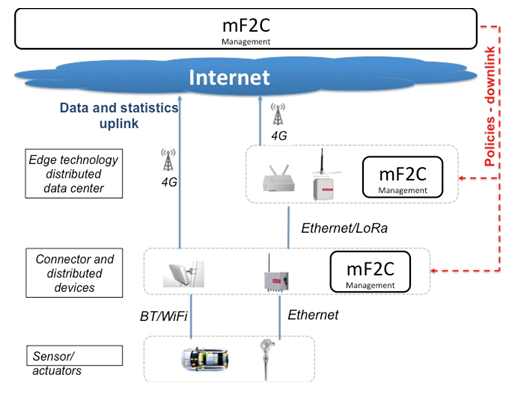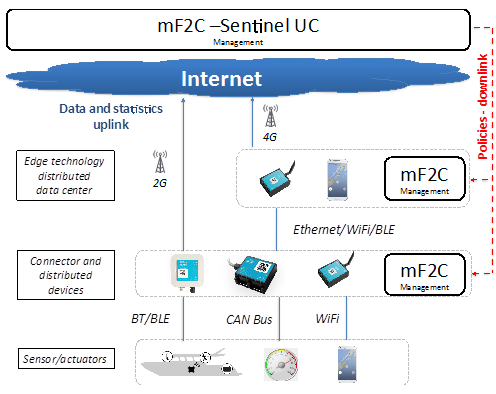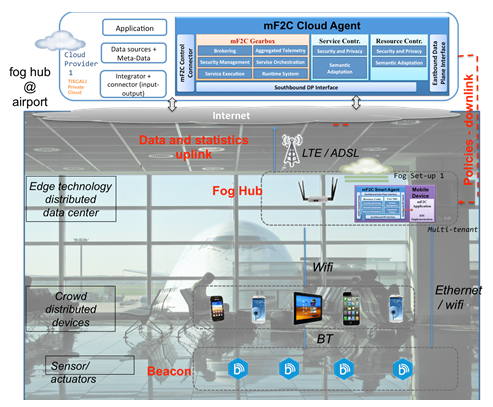Use Case 1: Emergency Situation Management in Smart Cities (ESM):
Continuing into this century, society has supported a movement of people from rural areas to cities. Nowadays, more people live in urban environments than in rural ones. It is estimated that this process will not stop and within 20 years the urban population will be around 5 billion of people. The big challenges for the whole society will be related to resource management and mobility throughout these overcrowded environments. Worldsensing works in the development of a model for smart cities. These products intend to solve current and future problems related to the use of private vehicles such as air-pollution, stress, waste of time, accidents. The proposed traffic control use case within mF2C project aims to validate a novel and innovative hybrid architecture that serves 1) to analyse flows of people and vehicles in order to provide useful information to private customers and authorities, 2) to detect a possible emergency in real-time, and 3) to decrease the necessary resources in terms of energy, latency, etc. to respond to specific situations in accordance to the applications requirements.

Use Case 2: Enriched Navigation Service (ENS):
XLAB designs and commercializes Sentinel, which is an IoT device consisting in different sensors currently applied in the navigation sector for vessel monitoring. XLAB has already developed 1,000 Sentinel devices mainly in the Adriatic Sea, aiming at improving quality of the sailor’s journey. As of today Sentinel devices work in an isolated way, hence losing the potential benefits brought by correlated data processing. As a product evolution, XLAB is currently working on the design of novel services enriching the Sentinel port-folio. However, most of the ideas for innovative services require the missing data correlation but also additional capacities such as interaction with external data, etc. Recognized that F2C as the suitable computing technology for Sentinel to be enriched with new services, including the opportunity to use predictive models as well as the interaction with other open source databases, the management framework proposed by mF2C to appropriately orchestrate F2C resources is a must.

Use Case 3: Smart Fog-Hub Service (SFHS):
Tiscali (one of the leading ISP and alternative Telco Operators in Italy, and Europe) is focused on extending the portfolio of products and services offered, and includes in its roadmap the interest in setting up hubs in public environments (e.g. airports, train stations, hospitals, malls and related parking areas) capable of tracking the presence of people and other objects in the field, and develop value added services on top for proximity marketing, prediction of path/behaviour of consumers, and taking real time decisions. The foreseen hubs could form the base for some products to be delivered at home’s premises or could be adapted to be used as a planning tool for determining the number and distribution of people that use (or is expected to use) various services like public transport, etc. This kind of hub can be easily considered as a fog device that should embed cloud connectivity to either process large amount of data or request extra-data – perhaps data coming from other fogs nearby –, scenario defined as Smart Fog-Hub Service (SFHS). Basically the IoT will be driven by business market instead of consumer market, and Tiscali believes that SFHS would be the best way to aggregate business users, design new business scenarios and create value. There is with no doubt that the capacities provided by mF2C will enable the distribution of the processing of data, reducing traffic load between cloud & hub and latency in interactive services.
